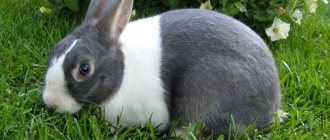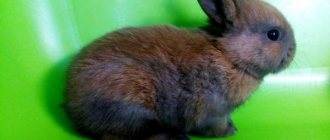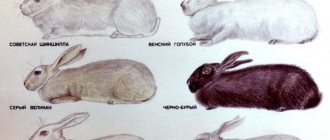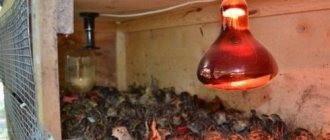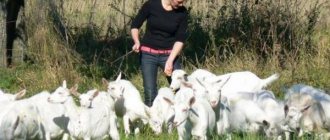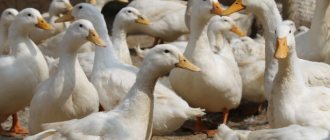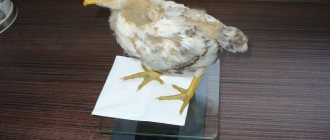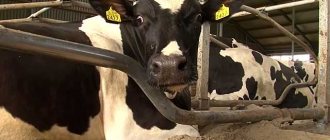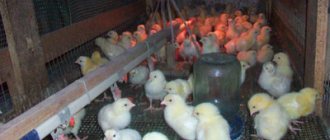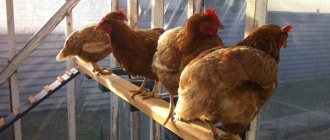Choosing a breed for beginners
Cute eared animals do not require complex, time-consuming care. They can be kept in an apartment. But for beginners, it is better to start breeding and keeping rabbits at home with short-haired breeds, since the fur of these pets is easier to care for. Long-haired breeds require daily care and special temperature conditions.
Rabbits respond to affectionate treatment and are able to reciprocate. The Fold-eared breed is popular among breeders. These animals are distinguished by their calm disposition and quiet behavior.
The animals live up to 12 years. They are often neutered at an early age. Then the animal has less worries, and it is even easier for the owner to care for the pet.
Decorative representatives include:
- Short-haired colored rabbits;
- fold-eared sheep breed;
- the Rex breed, whose fur resembles a plush toy;
- Angora breed, these rodents have a fur length of up to 20 cm;
- ermine rabbits, their fur is snow-white.
Ermine breeds are more demanding of room temperature and have a restless disposition. With such warm, thick fur, the animals feel hot in the apartment. For novice breeders, choosing representatives of the ermine breed will cause difficulties in caring for the animal's fur.
Basic principles of content
Keeping a furry pet will require some knowledge from you. First of all, you need to know in advance all the nuances of keeping it and, of course, what to feed the rabbit at home. It is recommended to obtain this information from several sources. You should not rely on the opinions of friends and neighbors, because they may make mistakes, and you will repeat them.
The first thing you need to do is buy a cage and everything you need for it. Don't let this surprise you. Indeed, for rabbits, first they buy a house to live in, and only then the pet itself.
Decorative breeds do not tolerate overheating very well. Direct sunlight and stuffiness are contraindicated for them. Animals are negatively affected by excessive levels of hydrogen sulfide, ammonia, and carbon dioxide in the environment. Drafts, dampness and high humidity are also undesirable. Rabbits don't sweat at all. The most acceptable temperature for them is +18... +20 degrees. Heat exchange in animals occurs through veins in the ears.
If you notice that your pet is reacting poorly to the heat, wipe its ears with a wet cloth. The cage itself can be covered with a damp towel. You can also put a bottle of ice in it.
At home, it is necessary to keep such fluffies only in cages. Pets are very fearful and have an incredibly fragile spine. How long rabbits live at home directly depends on the quality of care and maintenance. If you pick up your pet, you need to hold it tightly. If a rabbit unsuccessfully jumps from a certain height, it may well die.
In addition, it is worth remembering that decorative animals do not need to communicate with dogs and cats. After all, they can start chasing an animal that is harmful to such races. In addition, breeders do not recommend rabbits for families with very young children. After all, sociable kids will certainly start playing with the fluffy bunny. Such games of children are not complete without pulling pets by the skin or ears. Such stress is dangerous for rabbits and can result in illness.
Decorative breeds are distinguished by extreme pampering. From the slightest draft they can catch a cold, and from stuffiness they can simply die. Your pet's cage should never be placed in the sun.
It is common for pets to make noise at night. The next morning you should always check that the rabbit feeder, hay and water trays are well secured. If such accessories are poorly secured, the animal will play with them, scattering hay and grain.
The bedding in the cages should always be dry. This is one of the basic rules that should be followed. Sawdust or straw can be used as floor bedding. It is changed at least three times a week. Very often, the appearance of gastric problems is associated with wet and dirty litter.
Fluffy pets are incredibly clean. You will have to clean your rabbit's feeder and wash the litter tray daily. The animal will not go to the toilet in a dirty place. It will simply find a new, cleaner place nearby.
Placing rabbits
It is important for a novice rabbit breeder to make the right choice in which way to place the pets. Then the care and maintenance of fluffies will give positive results.
- Contents in cells. This method has its pros and cons. On the one hand, in cages it is easier to control the nutrition and health status of each animal, and the risk of the spread of infectious diseases is reduced. On the other hand, the construction and equipment of cells requires certain costs. In addition, daily cleaning and individual feeding are time consuming. When kept in an apartment, rabbits should definitely have a cage. However, recently portable enclosures for furry pets have appeared in pet stores.
- Cultivation in an aviary. This method is most often used for seasonal breeding of meat rabbits, for example, in the summer at the dacha. It is relatively cheap, there is no need to build and equip individual cells, but some nuances need to be taken into account. The fencing is made not only from above, but also underground. It costs nothing for rabbits to dig under and escape. They deepen the fence by 80–100 cm. In addition to the open space, pets should have shelter from rain and bad weather, and for mothers, a secluded place where they can give birth and raise their rabbits. Drinkers and feeders are firmly fixed to the walls. Pets of approximately the same age are placed in the enclosure and all at once. “Strangers” moved in later may not be accepted and may even be injured.
- Growing in a pit. An economical and convenient way to care for rabbits in the countryside. There is no need to build additional rooms for breeding and wintering - the rabbits will dig them themselves. In winter, the pit is warm; you just need to make a canopy to keep precipitation out. The pit is placed on a hill or a thorough drainage is made and water is drained to avoid dampness and flooding.
- Grazing method of keeping. At its core, this is a large enclosure. Place it in an area sown with clover, alfalfa, timothy, oats or other herbs tasty for rabbits. Rabbits feed on their own; it is only important to provide them with fresh drinking water. There is no need for daily cleaning and cleaning of cages. Animals kept freely grow and develop better and get sick less than their counterparts imprisoned in cramped cages.
Attention! Furry and downy breeds should not be kept in a common enclosure or pit. Rabbits often fight and damage their skins with scars and bald spots.
Arrangement of cells
You should think about where to live before purchasing your first pair of rabbits. Usually, for this purpose, ready-made cages and enclosures are purchased or created with your own hands from scrap materials.
It should be noted that these animals are known for rapid reproduction, so the cages must be spacious enough. To save space, you can purchase or build two- or three-story homes for future pets.
With a large population, several cages can be installed close to each other.
The cage must have a roof on top that protects the animals from precipitation, and on one side the farmer must have access if necessary to get the rabbit out for inspection or for another purpose. The cages should not be installed directly on the ground, so the design includes legs at the bottom.
From the outside, the doors close with a latch to block the escape route for frisky rodents. Each compartment must have the ability to install feeders and drinkers. To facilitate cleaning, there should be a retractable tray at the bottom of the structure to collect animal excrement.
In the warm season, housing for rabbits is installed directly in the courtyard, choosing an area protected from drafts and direct sunlight.
In winter, if possible, they should be moved to a barn or basement. If this is not possible, then insulation must be carried out by covering the cells with appropriate material.
If space allows, you can build enclosures for your pets. This allows them to take walks, fulfilling the need for movement. Rabbits can nibble not grass stored for future use, but grass growing directly on the ground.
Enclosures have a simpler design than cages, so building them with your own hands will not be difficult and will not cost much. Another advantage is that rabbits living in enclosures in spartan conditions acquire stronger immunity, get sick less often and reproduce more intensively.
Since the animals can jump very high, it is necessary to make a restriction on top, possibly from the same material as the walls. This will also protect against small predators getting inside.
Farmers notice that rabbits placed in an enclosure seem to improve their mood. They become more playful and cheerful than their counterparts living in tighter cages. The house leaning against the enclosure serves as a nest where females bring offspring and nurse them.
Another option for breeding animals is to keep them in a specially equipped pit. This is more economically beneficial. Since their ancestors, wild rabbits, live in burrows they dug themselves, domestic rodents, obeying instinct, will quickly get used to this way of life.
This method is more suitable for raising meat breeds, since the skins can be damaged during fights, which are difficult to control. In addition, incest between related individuals is possible, which leads to deterioration of health and degeneracy.
This method cannot be used in places with a large amount of sand, which can begin to crumble and lead to the death of the inhabitants of the pit. It is unacceptable to breed rabbits in a pit built in an area where regular flooding occurs.
Cage equipment
You can buy ready-made cages or build your own. To do this you will need metal mesh, plywood, boards and slats. The approximate size of the housing for two individuals is 60x70x50 cm. The floor in the cage is made of mesh or made of slats with an interval of 1–1.5 cm. The front wall is also made of mesh, the back and sides are solid. Cells can be arranged in several tiers. If the building is located on the street, it is necessary to make a roof or canopy and provide insulation for cold weather. Straw, sawdust or spruce branches are laid on the floor.
The rabbitry is located on the site so that the front part of the cages faces southeast. In winter, the cages are moved to a heated barn. If they remain outside, they are insulated with polystyrene foam, mineral wool, grass mats and other heat-insulating materials.
Choosing a cage and location
It is necessary to keep a decorative rabbit in a large cage that will allow the animal to move freely. Tight cells contribute to slower physical development, thinning of bones and muscle corset. The cage space should be 5 times the size of the rabbit. The decorative rabbit is also called a dwarf rabbit. The size of the animal is small, which is why they are also called mini rabbits.
The long side of the long-eared dwelling ranges from a meter to one and a half meters.
The temperature in the room where the pet will live should be from 18 to 20 degrees. Do not place the cage in direct sunlight or drafts. Animals cannot tolerate overheating and drafts, so choosing a place for a cage near a radiator or under an air conditioner is also not recommended.
Rabbits are afraid of loud and sharp sounds, so it is better not to place a TV in the room where the animals will live. They are also afraid of other pets, so they are not suitable for common areas, unless there are other pets in the house. Bright rooms with access to fresh air are suitable for the long-eared place of residence. That is, it is better not to place a cage in the kitchen, corridor or hallway. And when ventilating, you need to make sure that there are no drafts.
Owners of private houses are building enclosures for eared animals. The main thing in such an enclosure is protection from rain and from prying eyes. You can also keep eared pets in a barn.
It is also possible to keep them at home without a cage. This is possible with a large population of eared animals. In this case, a hole is dug for the animals on the site at a depth of up to 1 meter, and they dig holes for themselves there.
Fabrication of cells
It is difficult to provide a proper diet for each animal under such conditions.
Selecting a location
If kept freely, it is necessary to prepare the enclosure by fencing it with a chain-link mesh or other material that acts as a fence. On the territory of the enclosure it is necessary to install a rabbitry in which the animals can hide from bad weather and spend the night. Floor maintenance involves insulating the floor. You can give each rabbit a cage.
Cages are installed in open space or indoors. A garage or shed will do. A small number of rabbits can be kept even on the balcony of an ordinary apartment. However, even if sanitary and hygienic standards are observed, the place of detention has a specific smell that will be heard in the apartment, which is a significant drawback of apartment housing.
Many people are engaged in breeding small animals in the country. In this case, the cages are installed outdoors or in a greenhouse.
Keeping them outdoors involves choosing a place to install cages. Rabbits are afraid of drafts. It is better to prepare a place for installing cages near other rooms that will protect them from the wind.
Animals should not be exposed to direct sunlight. Although the place is too shaded
How to equip a cage
In the cage, your eared pet should have:
- Toilet;
- sippy cup;
- feeder;
- wooden house.
The cage should have a plastic tray. This material is easy to clean and does not react with animal waste products. A slatted floor is a bad option because the animal's paws get stuck between the bars. This can cause your pet to break or twist its paws.
Place a mat in the tray to prevent the paws from slipping. The filler is poured into the tray. If you put sawdust or hay in the tray, the rabbit will use the entire cage as a toilet.
The drinking bowl and hay box must be attached to the bars of the cage, as these animals love to take loose objects in their teeth and knock them against each other or against the walls of the cage. And you need to choose a feeder that is heavy and stable so that your pet doesn’t tip it over.
A pet needs a resting place to hide in case of fright.
Is it possible to grab it by the withers?
If you look at the photo below, you will see that it is also not recommended to take an animal by a fold of skin on the neck or back. This is not as dangerous as in the case of the ears, but there are other, safer ways.
The fact that this method is more comfortable for the animal is evidenced by the fact that, as a rule, in this situation it does not break out or scratch. Most often, the crawl simply hangs down, while its neck and head are pulled back somewhat.
If you use this method of lifting, then you must support the crawl’s body in the sacrum area with your second hand.
By the way, it is by the withers that the rabbits are carried by their parents. Some rabbit breeders advise holding animals with both hands at the same time: one in the neck area, the other in the back area. This way it will be in a horizontal position, and the body weight will be evenly distributed.
Conditions of detention
Keeping a decorative rabbit at home requires some skill. Long-eared animals cannot stand the heat, but they can be helped. The ears of animals have the function of thermoregulation. To cool the body temperature, wipe the animal's ears with a damp cloth from the outside. To reduce the temperature inside the cage, place a towel soaked in cold water over it, and place a bottle of cold water and ice in the cage.
Rabbits are quite shy animals. Harsh sounds cause them stress, which subsequently has a negative impact on their health. And if a loudly barking dog lives in an apartment, then such a sound can cause the long-eared pet’s heart to stop.
To establish a trusting relationship between the owner and the pet, the animal needs to be stroked and periodically held in your arms. They do this not every time the owner wants, but when the rabbit is awake. You cannot shout at your pet, as their hearing is sensitive, the owner’s cry is perceived as a bolt from the blue.
The rodent needs to go for a walk every day to develop and maintain its physical skills. But while walking, you need to keep an eye on your pet.
How to toilet train an animal
In nature, rabbits are very clean; they never defecate in the hole. When keeping a decorative rabbit, it is easy to teach it to go to the toilet in a litter tray.
To do this, the tray is placed away from the feeder and bedding with traces of the animal’s urine is placed inside. Based on the smell, the rabbit will find the toilet and begin defecating in one place. Accidents may happen for a while, but this is no reason to scream and hit the animal! Animals are overly emotional and can get sick from stress.
How to properly care for rabbits at home
Successful breeding and care of rabbits at home consists of meeting the following requirements.
- Choosing a method of keeping and reasonable placement of pets. Rabbits are kept in sheds, enclosures, and pits. The rabbitry can be located in an open space under a canopy. A mini-farm can even be set up in an apartment or on a balcony. Females, males and young animals are housed separately.
- Balanced food, always fresh drinking water. Caring for rabbits involves high-quality, fresh food, the required amount of vitamins and mineral supplements. Under no circumstances should you give your pets rotten hay or vegetables. Root vegetables are washed before feeding, and fresh green grass is slightly dried. Food should be varied.
- Timely vaccination, daily examination. It is necessary to identify sick and simply lethargic individuals and immediately place them in separate cages to determine the cause and treatment. This way you can prevent others from becoming infected.
- Daily cleaning and keeping cages clean . In unsanitary conditions, rabbits are much more likely to get sick. Once every 10 days it is necessary to disinfect the cage and all equipment in it: feeders, drinking bowls. The litter is changed more often, depending on the contamination.
Types of feed
All types of food for rabbits can be divided into four groups:
- Rough.
- Green.
- Juicy.
- Concentrated.
What do rabbits eat at home? The diet must include green food. In spring, summer and autumn there are usually no problems with this issue. Green feed must be introduced in the spring, with the appearance of the first green shoots of plants. They should form the basis of your pet's diet until late autumn.
Green food includes:
- Pulses, legumes and seeded grasses.
- Wild herbs.
- Feed cabbage and vegetable tops.
It is better to harvest green herbs that pets eat in natural meadows. You can also use seeded grasses from the fields: oats, alfalfa, clover, winter rye, lupine, corn, barley. Legumes, cereals and legumes contain a lot of protein, they are rich in minerals and vitamins. But they are not given pure, but only in a mixture, since they cause flatulence and bloating.
Some wild herbs are not suitable for feeding rabbits because they are poisonous to them.
Tops of vegetable crops are used as green fodder: potatoes, sugar beets, Jerusalem artichoke.
Queen cell
A pregnant rabbit needs a special room, a queen cell, to give birth and hide newborn rabbits from prying eyes. Usually this is a small extension to a cage measuring 40x40x30 cm, into which a round hole leads. The queen cell looks like a hole. But the roof still needs to be made removable in order to control the behavior of the young mother, remove stillborn babies, and see if everyone has enough milk. A few days before giving birth, the female rabbit lines the bottom of the queen cell with her down. No assistance required during childbirth. She will also take care of the newborn rabbits herself. You just need to provide her with enough quality food and fresh drinking water. If the mother feels a lack of one or the other, she may eat her offspring.
Place for a rabbit
Even if the owners do not intend to restrict the pet’s freedom of movement, a separate area is still needed for the rabbit to rest and eat. The optimal and easy-to-maintain option is a cage. When choosing one, you need to pay attention to its size - rabbits love space, so the cage should not be less than 60 cm in length. It is better to choose a cage with a tray so that the animal does not damage its paws while walking on the grid. The pallet is covered with straw or sawdust. The toilet for a rabbit can be organized in the form of a tray, which is used for cats - it is quite easy to care for.
Cleaning the cage
To keep your pet clean, it is recommended to clean its home regularly. A clean animal’s “room” will not produce a stench and will ensure the cleanliness of the coat.
To avoid any odor, the tray is washed every day. But usually washing it twice a week is enough. The cage with tray and all accessories are washed 1-2 times a month using a special cleaning agent that does not harm the animals. If the contamination is weak, then it is enough to rinse the cage with water and vinegar. It is strictly forbidden to wash with household chemicals (dishwashing detergents, washing powder, chlorine-containing products).
Care and maintenance in an apartment or other enclosed space requires daily cleaning of the cages. If the rabbitry is located in an open space, you can clean it a little less often, once every 2-3 days. Disinfection is carried out 2-3 times a month. The cage and all equipment are doused with boiling water or treated with a 1% formaldehyde solution.
If it is possible to attach an enclosure to the rabbitry for walking, your pets will thank you with great activity and good weight gain. You can walk rabbits all year round.
Paying attention to your rabbit's health
The health of an animal depends not only on providing comfortable living conditions, proper, nutritious nutrition and active lifestyle, but also on timely medical interventions. First of all, when buying a rabbit, you should think about vaccinations, which you can get at a veterinary clinic or yourself by purchasing the necessary vaccines.
Rescue injections are administered to the animal at the age of approximately one and a half to two months. Vaccines are given for:
- viral hemorrhagic disease of rabbits;
- myxomatosis.
A rabbit can be vaccinated at a veterinary clinic.
For these two main diseases, animals today often use a complex vaccine, so the big-eared animal will only have to endure one injection. If everything goes well, revaccination is repeated after three months, and then every six months.
If, in addition to the rabbit, there are other animals living in the house or you take the rabbit out for a walk in natural conditions on the street, make sure that you are vaccinated against rabies.
Daily inspections
The rabbit's eyes, ears and nose should be examined at least 2-3 times a week. The subject of the search is purulent discharge or plaque, which can serve as a signal of the onset of the disease.
Periodic examinations of the rabbit can be carried out by a veterinarian.
Do not treat the animal yourself. The reaction of a rabbit's body to drugs is unpredictable, especially if you are not a doctor and do not know the exact disease or at least the correct dosage of the drug.
Hygiene procedures
To prevent pellets from forming on your pet's fur and forming tangles, you need to brush them regularly. Comb brushes for small dogs are great for this activity. If you do find a tangle, cut it mercilessly with scissors, as it is no longer possible to comb the tangle.
You can bathe your rabbit partially, washing away the main contaminants from the fur locally.
Since rabbits do not have water treatments in nature, bathing them in a bath is not recommended. Sticky areas of fur are wiped with a damp cloth or sanitary napkin, and then a special conditioner for animal fur is applied. However, some rabbits simply love to bask in warm water and do not mind enduring a soapy massage from their owners.
Some rabbits love to swim
On a farm, rabbits are usually not washed, however, no one forbids you to bathe your pet or comb its fur. The main thing is to remember the farmer’s personal hygiene and wash his hands thoroughly with soap after carrying out procedures.
Do not blow-dry your pet's fur as this will be fatal.
Nail trimming
The claws of long-eared pets should be trimmed at least once a month. The trimming process is similar to cutting off the claws of dogs and cats. The main thing is not to touch the blood vessels and the paw bone. If you are afraid to carry out circumcision yourself, entrust it to experienced rabbit breeders. In any case, the procedure will have to be carried out, since the rabbit can inadvertently pull out a long nail and will experience severe pain.
Trimming a rabbit's claws
Video - How to trim a rabbit's claws?
Nutrition
In summer, rabbits are fed mainly with forbs, leaves of bushes and fruit trees, vegetables, fruits, and root crops. And also roughage: grains, legumes, compound feeds. The grass should be given pre-dried to improve digestion. Potatoes, carrots, beets, and celery must first be washed well.
The basis of the eared diet is hay, food, fruits and vegetables, twigs and clean fresh water.
There should always be enough hay in the hay barn. Feeding dry grass helps normalize digestion.
Special food is very important for animals, as it saturates the animals and contains the necessary nutrients. It comes in the form of grain food for rodents, or as a combined food. Compound feed is often chosen for feeding eared animals, as it promotes the growth of small individuals. Feed is given one tablespoon three times a day. Adults are given twice a day. The animals eat the tasty grains first without touching other parts of the feed. But you should not remove them immediately; it is recommended to wait until the pet has eaten the entire portion.
Teeth wear down on tree branches and solid food particles. Rabbits can be treated to branches of pear, poplar, willow, apple, and birch. The branches must first be washed and dried.
Salt and vitamin stones are sold in stores. They are useful to give to rodents. They ensure the supply of vitamins and minerals to the animals’ bodies.
There should always be boiled water in the drinking bowl. It needs to be changed every day.
Rabbits are given fresh plants: dandelion, alfalfa, yarrow and others. First, the pet is given a leaf to try and the body’s reaction to the new food is observed. If your pet liked the food and accepted it well, then you can give more of this herb next time. If your pet has problems with stool, then there is no need to give this plant.
Chalk and salt are needed all year round. 1–2 g of chalk and 0.5–1 g of salt per individual per day.
It is important for a rabbit breeder to know how to care for rabbits that have recently been taken from their mother. They still have a weak, not fully formed digestive system. Therefore, they cannot be fed with roughage and dry food, grains, legumes, and hay. It is better to give young animals tender young grass, vegetables, and boiled potatoes.
Rabbits' food should not contain cabbage and beets. But the animals like apples, pears and carrots.
Feeding rabbits: diet
Caring for a rabbit involves a balanced and thoughtful diet. It is necessary to keep track of what and in what quantities the animals eat. There is a special feed to which they need to be accustomed. Due to the hard granules, the rabbit's teeth are well ground down, the growth of which never stops.
In summer, the best diet for rabbits is fresh grass.
In winter, hay is added to the diet. The feeder should contain solid food: carrots or other root vegetables, hard branches of fruit trees. Prepare mash with boiled vegetables or potatoes with the addition of bran. Small amounts of salt, bone meal and chalk should be present in the diet. Feeding occurs twice a day, with a 12-hour break between them.
When breeding rabbits, proper feeding is very important.
An important condition is to constantly add water to the drinking bowls. Without water, feed is not fully digested. If the food is dry, then the “eared” one needs 0.5 liters per day. water. In summer there is no such need for water, since the feed is succulent.
How to pick up a rabbit correctly
Decorative rabbits are quite fragile creatures. They are not adapted to jumping from heights; their spine and muscular corset are weak. At the same time, the fright of the animals can make them jump from the hands of the owner who is holding the pet incorrectly. To avoid traumatic situations, you need to handle the rabbit correctly.
The first way to pick up a rabbit is to hold it under its front legs with one hand and support it from below with the other. In this position, the rabbits feel most calm, they will not break free, and if they do, the owner has the opportunity to easily hold the animal.
The second way is to grab the scruff of the neck with one hand, and also support it from below with the other. Not all rabbits like this “grab,” but it does not cause any particular inconvenience and the rabbit should behave calmly.
The common myth that rabbits need to be held by the ears is a grave mistake. You can't keep rabbits like that. It is still impossible to take them only “under the armpits”, lift them by the front legs or by the “scuff of the neck” without lower support.
What you need to know about rabbits
When buying a rabbit, you need to understand that these animals have certain characteristics and needs that must be taken into account. First of all, it should be borne in mind that rabbits have a well-developed nervous system. In order for an animal to feel good, when caring for it, you need to protect it from stress - loud sounds, flashes of light, sudden changes in daily routine. Do not frighten or disturb your rabbit when it is eating, washing itself, or resting in its cage.
It is extremely undesirable to rudely invade his nest when the cubs are there. In addition, it is important to know that rabbits are quite active animals, they need space to walk, they especially like to walk in the evening and at night.
Due to the fact that rabbits are rodents and they constantly need to grind their teeth, you need to make sure that he always has something for this purpose.
Hygiene procedures
Caring for a dwarf rabbit is a little more difficult than a regular one. To prevent the pet from damaging the furniture and floor, and also from accidentally scratching the owner’s hands, it needs to trim its claws. Do this 1-2 times a month, depending on the growth rate of the nail platinum. To trim claws, use a special nail clipper or small scissors. Rodent claws have a nerve ending and a blood vessel at the base. If you touch a nerve or vessel while cutting, it will cause pain to the animal. Therefore, you should cut off the claws in small parts so as not to accidentally cut off excess.
Soft fluffy wool is the pride of rabbits. To keep it in good condition, it needs to be looked after. The coat should be brushed daily with a special brush. If you don’t do this, your pet will develop tangles. They disrupt heat exchange, and when trying to get rid of them, rabbits may swallow wool. This leads to digestive problems.
Rabbits are clean animals. They take care of their fur coat themselves. But if an animal has diarrhea, then it is necessary to help it clean up. If your pet gets dirty, you should wash it. This should be done in a warm, draft-free room with a special shampoo. Immediately after washing, the rabbit should be dried.
Animals need to have wax removed from their ears. This is done using a cotton swab dipped in hydrogen peroxide. It is not recommended to use cotton swabs to avoid injury.
Eye care involves wiping them with a cotton pad moistened with clean water.
It is necessary to care for a decorative rabbit regularly in order to keep the pet clean and monitor the health of the ward.
There is a video for beginners to properly care for rabbits at home.
Diseases and vaccinations
Decorative rabbits are susceptible to:
- Myxomatosis;
- infectious stomatitis;
- coccidiosis;
- pasteurellosis;
- indigestion;
- diseases of the eyes and ears;
- helminthic infestation;
- diseases caused by tooth growth.
Worms, if not removed, can lead to the death of the animal. Therefore, your pet needs to be wormed regularly, once a season, even if the rabbit does not go outside.
To prevent diseases, rodents are vaccinated.
Vaccination is carried out according to the scheme. The very first vaccination that a young rabbit is given is a vaccination against viral hemorrhagic disease. The second vaccination against VGBV is given after 3 months, and subsequent ones every six months.
It is imperative to vaccinate your pet against myxomatosis. This vaccine is administered once a year. There are complex vaccines against VGBV and myxomatosis.
Myxomatosis is transmitted through parasites: fleas, mosquitoes and other blood-sucking insects. Since they appear during the warm period, it is better to vaccinate at the same time.
Pregnant females and those who have just given birth are not vaccinated until the rabbits are fed with mother's milk. It also makes no sense to vaccinate an animal that is already sick. Vaccinations are given only to healthy individuals.
After vaccination, rabbits are kept in quarantine for 2 weeks. Before vaccination, animals are dewormed 10 days before vaccination.
It is a good idea to vaccinate your animal against rabies, pasteurellosis, paratyphoid fever, and listeriosis.
A domestic animal is more susceptible to disease than a rabbit living on a free range.
How to raise a hare
Bunnies are born in the spring. They are born sighted and covered with fur, and after a few days they begin to learn to run. The mother hare hides her brood in a small hole, and she goes off to look for food. She visits the bunnies only once a day to feed them. In the spring, people often find bunnies left alone and, believing that the litter has been abandoned by the mother, they decide to “save” the animals - they take them home, try to feed them with goat or cow’s milk, which usually kills the bunnies. Important! You cannot take home rabbits found in the wild. Even people who have experience in keeping these animals are not always able to save and feed a hare, since hare milk is unique and has no analogues in composition. The exception is when the bunny is in obvious danger: he is wounded, looks exhausted, a predator is trying to attack him, he is in a dangerous place (for example, near the road), etc. If it so happens that the rabbits, either unknowingly or out of necessity, were taken from the place where their mother left them, you need to know how to care for them correctly.
Disease Prevention
Like people, rabbits suffer from infectious and non-infectious diseases. Most often they suffer from respiratory diseases of the respiratory tract and stomach upset. The symptoms are the same: runny nose, sneezing, redness of the mucous membranes, general weakness during a cold, and loose stools, sometimes with blood, due to gastrointestinal problems. The disease can be triggered by improper keeping of pets: dampness, drafts, crowded cages, poor nutrition and improper care.
To prevent the most dangerous viral diseases, it is necessary to get vaccinated on time. In addition, new animals cannot be immediately added to the main herd. They must be quarantined for three months.
Every business requires knowledge, patience and desire. Enjoy rabbit farming, and we will share the necessary knowledge with you.
Determining gender
Determining the sex of rabbits is an important and necessary task for those involved in breeding eared rabbits.
Immediately after birth and until weaning from mother's milk, it is very difficult and impractical to determine the sex.
As soon as the rabbits become more independent, it’s time to determine which of them is which. To do this, you need to place the individual on a hard surface. Holding the pet by the scruff of the neck, lift it and sit it on its tail. With the second hand, they open the fur in the genital area. In females, the genital slit should open, located close to the anus. Males have a round opening that is further from the anus than the female.
In males who have reached puberty, pronounced testicles can be felt.
